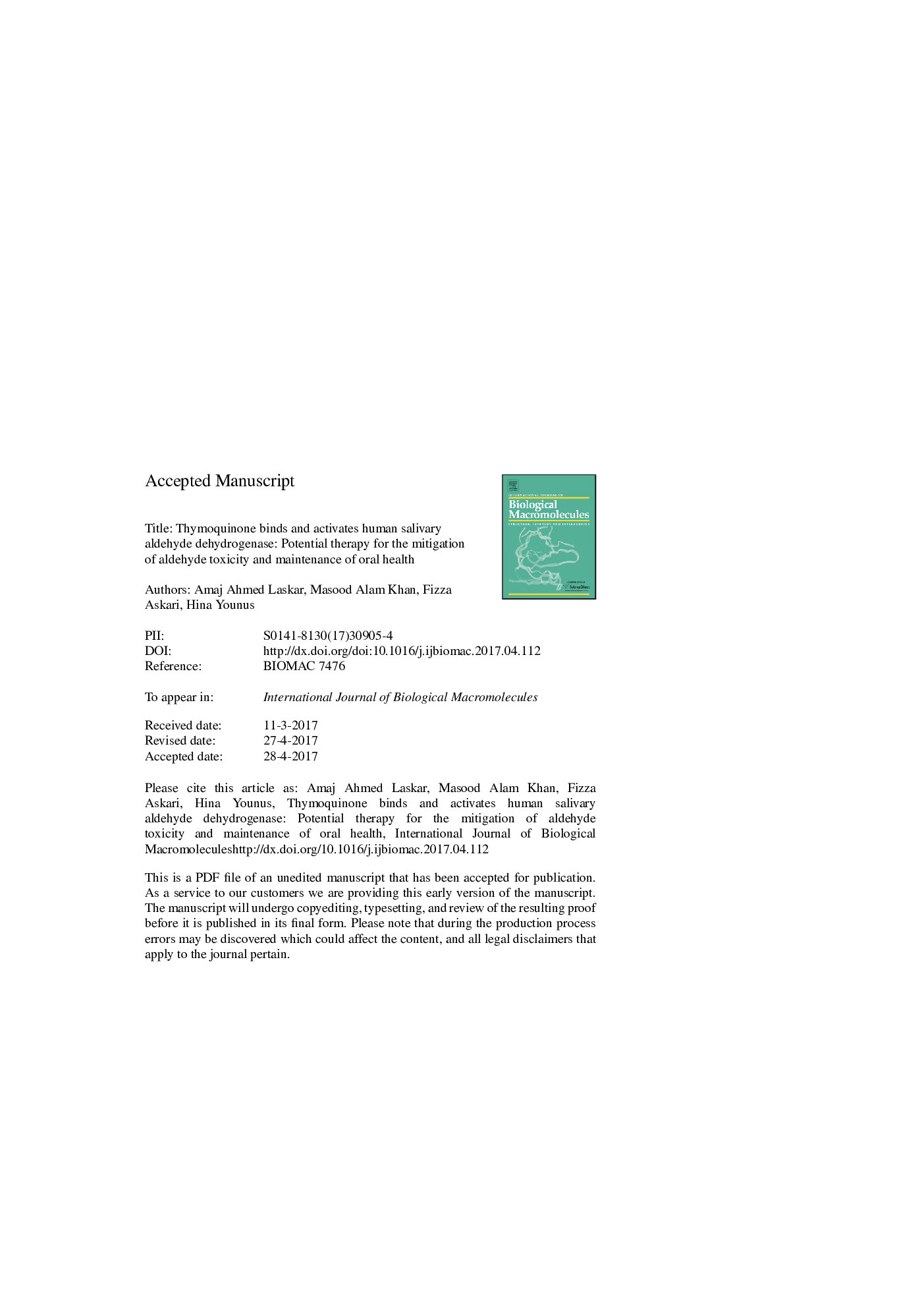| Article ID | Journal | Published Year | Pages | File Type |
|---|---|---|---|---|
| 5511832 | International Journal of Biological Macromolecules | 2017 | 37 Pages |
Abstract
Human salivary aldehyde dehydrogenase (hsALDH) is a very important anti-oxidant enzyme present in the saliva. It is involved in the detoxification of toxic aldehydes and maintenance of oral health. Reduced level of hsALDH activity is a risk factor for oral cancer development. Thymoquinone (TQ) has many pharmacological activities and health benefits. This study aimed to examine the activation of hsALDH by TQ. The effect of TQ on the activity and kinetics of hsALDH was studied. The binding of TQ with the enzyme was examined by different biophysical methods and molecular docking analysis. TQ enhanced the dehydrogenase activity of crude and purified hsALDH by 3.2 and 2.9 fold, respectively. The Km of the purified enzyme decreased and the Vmax increased. The esterase activity also increased by 1.2 fold. No significant change in the nucleophilicity of the catalytic cysteine residue was observed. TQ forms a strong complex with hsALDH without altering the secondary structures of the enzyme. It fits in the active site of ALDH3A1 close to Cys 243 and the other highly conserved amino acid residues which lead to enhancement of substrate binding affinity and catalytic efficiency of the enzyme. TQ is expected to give better protection from toxic aldehydes in the oral cavity and to reduce the risk of oral cancer development through the activation of hsALDH. Therefore, the addition of TQ in the diet and other oral formulations is expected to be beneficial for health.
Related Topics
Life Sciences
Biochemistry, Genetics and Molecular Biology
Biochemistry
Authors
Amaj Ahmed Laskar, Masood Alam Khan, Fizza Askari, Hina Younus,
